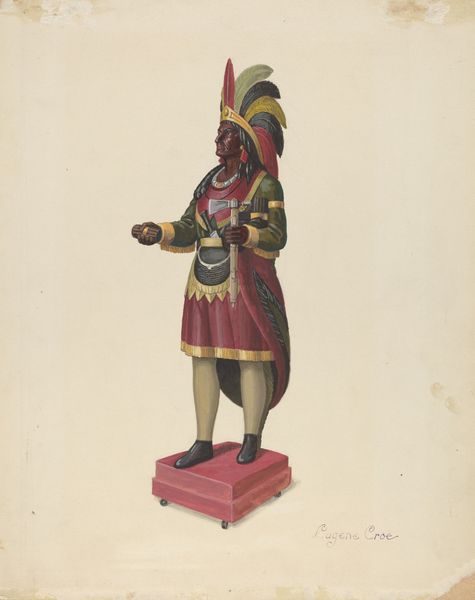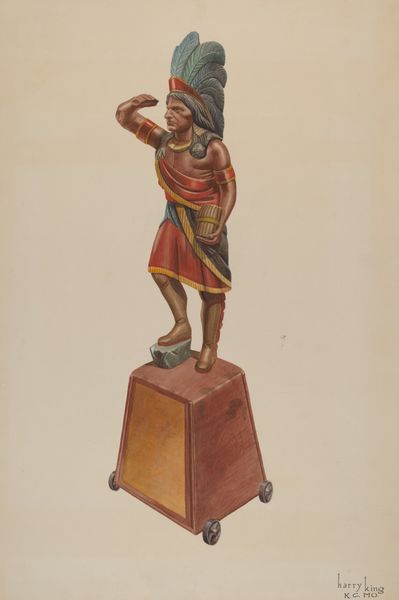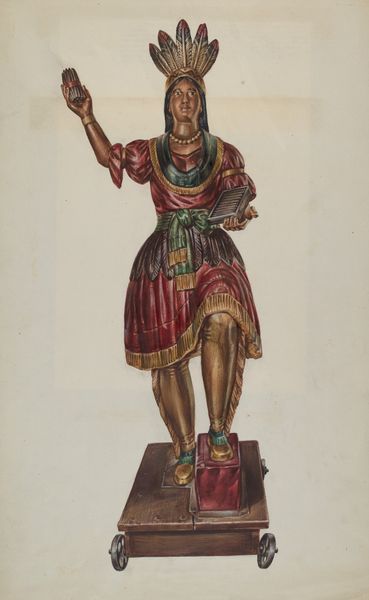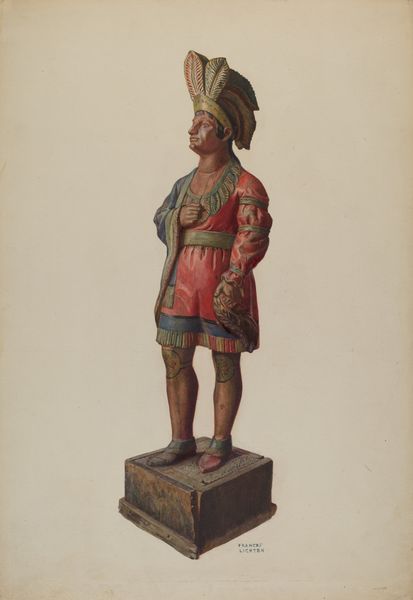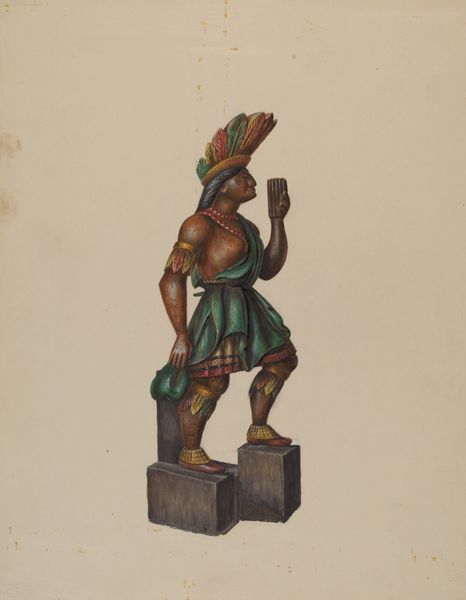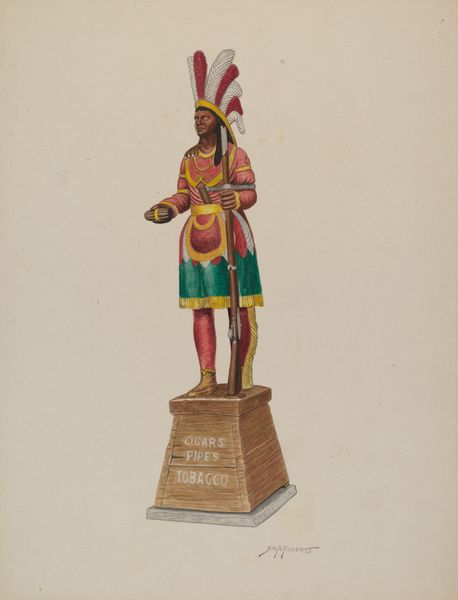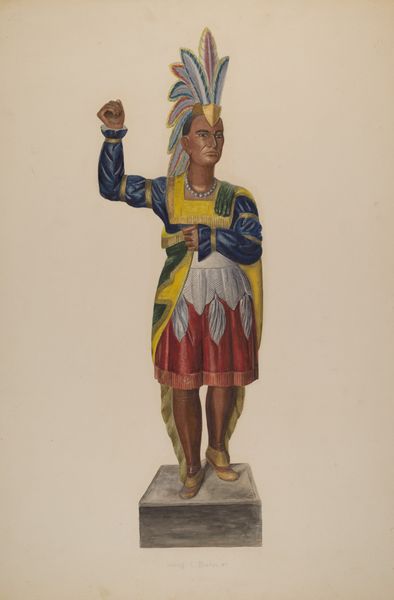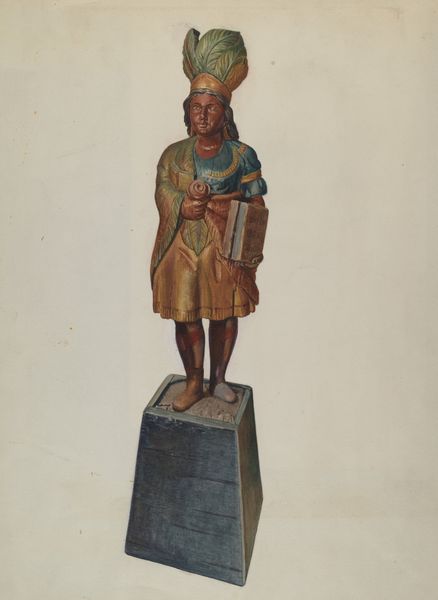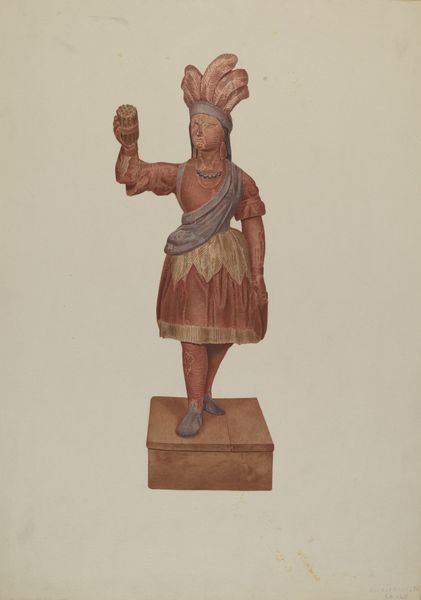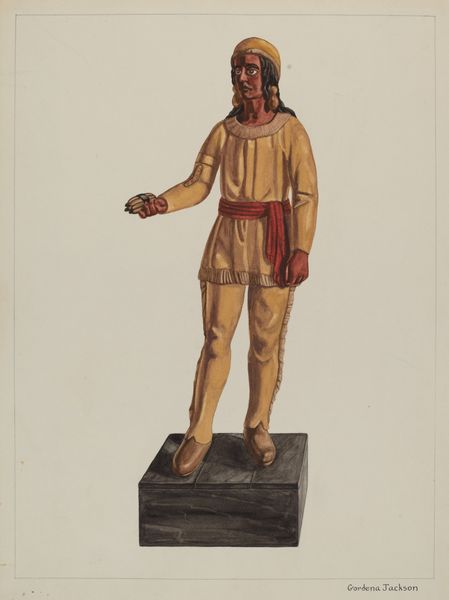
drawing, coloured-pencil, paper
#
portrait
#
drawing
#
coloured-pencil
#
figuration
#
paper
#
coloured pencil
Dimensions: overall: 54.5 x 39.7 cm (21 7/16 x 15 5/8 in.)
Copyright: National Gallery of Art: CC0 1.0
Editor: So, here we have Robert Taylor's "Cigar Store Indian" from around 1939, done with coloured pencil. It feels like a document of something already disappearing, and the colours are really striking. What do you see in this piece? Curator: What I see immediately is not an artwork meant for a museum, but a record of commercial material culture. This drawing documents the Cigar Store Indian—ubiquitous figures that signified tobacco sales in the 19th and early 20th centuries. How do the drawing’s materials—colored pencils on paper—shift our understanding of this object's production and use? Editor: That's interesting! So, instead of focusing on the artistic merit, you’re drawn to its function and the implications of Taylor choosing drawing to represent it? Curator: Precisely. These figures were themselves mass-produced objects, often by anonymous carvers, designed to attract consumers. Taylor’s choice of colored pencil, a relatively accessible and reproducible medium, mirrors the object's own status. It makes you wonder, who was his intended audience, and what purpose did documenting this object serve during this period of the late 1930's? Editor: I hadn't thought about the accessibility of the medium in relation to the subject. So the drawing isn't just a picture; it’s part of the story of how these objects were made and used. Curator: Exactly. Consider the labor involved in creating the original wooden sculptures, and then Taylor’s labor in recreating that form. The drawing then becomes a commentary on consumption, labor, and representation, more than just an aesthetic object itself. Editor: That completely changes how I see it. It's not just a drawing of a statue, it's a commentary about its context. Thanks! Curator: Absolutely. And, reflecting on it further, the act of artistic "documentation" using accessible methods contributes to a broader cultural memory surrounding such figures, while implicating economic contexts of early to mid twentieth-century.
Comments
No comments
Be the first to comment and join the conversation on the ultimate creative platform.

